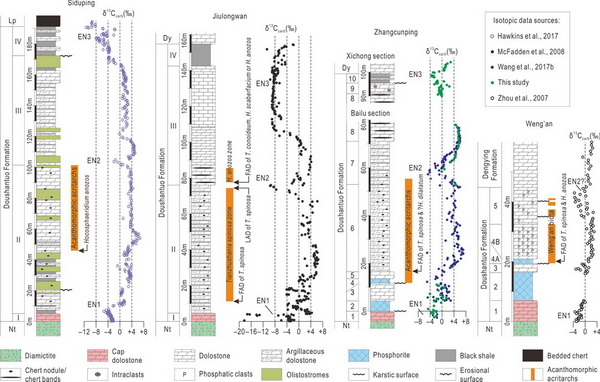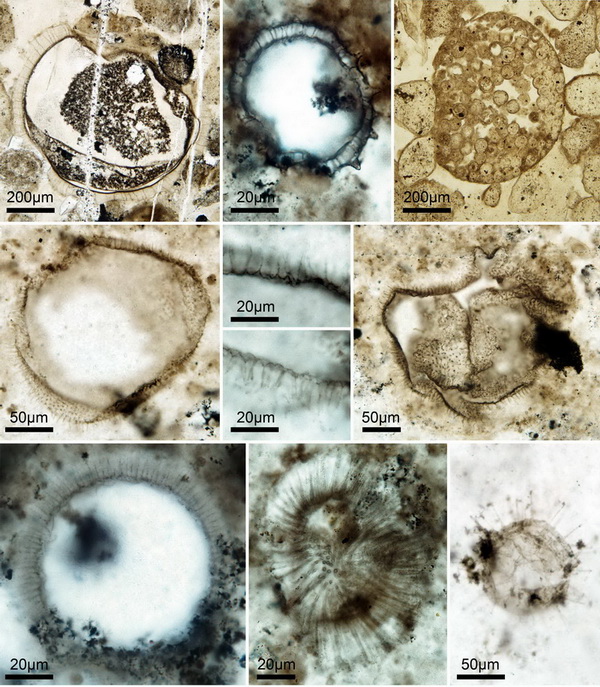Silicified and phosphatized microfossils preserved in the Ediacaran Doushantuo Formation in South China provide key evidence for the early radiation of eukaryotes after the Neoproterozoic global glaciations. Two microfossil biozones (the Tianzhushania spinosa biozone from the lower Doushantuo Formation, and the Hocosphaeridium anozos biozone from the upper Doushantuo Formation) have been proposed on the basis of acanthomorphic acritarchs preserved in the Doushantuo Formation chert nodules in the Yangtze Gorges area. However, their correlation with the stratigraphic horizons yielding Weng’an biota, a well-known phosphatized microfossil assemblage, has long been an issue of debate, which hinders our understanding of the radiation pattern of microscopic eukaryotes after the Marinoan glaciation, as well as their biostratigraphic significance in the subdivision and correlation of the Ediacaran successions.
OUYANG Qing from Nanjing Institute of Geology and Palaeontology Chinese Academy of Sciences and her colleagues carried out litho-, bio-, and chemostratigraphic studies on the Ediacaran Doushantuo Formation in the Zhangcunping area of the western Hubei Province, South China. They found that both the lithostratigraphic sequence and microfossil assemblage at Zhangcunping resemble those at Weng’an, indicating a straightforward correlation between fossiliferous strata in these two areas. Litho- and chemostratigraphic correlations suggest that the microfossil-bearing strata at Zhangcunping could be correlated with the upper part of the lower acritarch biozone in the Yangtze Gorges area, thus supporting the stratigraphic correlation between the stratigraphic units yielding the Weng’an biota at Weng’an and the upper part of the lower acritarch biozone in the Yangtze Gorges area.
This correlation scenario supports the idea that the Weng’an biota is biostratigraphically transitional between the lower and upper acritarch biozones, suggesting a stepwise evolutionary pattern of the Ediacaran acanthomorphic acritarchs after the Cryogenian global glaciation, and calls for more detailed investigation on the taxonomical composition and biostratigraphic ranges of acanthomorphs in the T. spinosa biozone in the Yangtze Gorges area, and re-consideration of acanthomorphic biozonation of the Doushantuo Formation in the Yangtze Gorges area.
Reference: Ouyang, Q., Zhou, C.*, Xiao, S., Chen, Z., Shao, Y., 2019, Acanthomorphic acritarchs from the Ediacaran Doushantuo Formation at Zhangcunping in South China, with implications for the evolution of early Ediacaran eukaryotes.Precambrian Research, 320: 171–192.

Correlation of the Weng’an biota at Weng’an, Guizhou Province and the Zhangcunping microfossil assemblage at Zhangcunping

Some acanthomorphic acritarchs from the Doushantuo Formation at Zhangcunping, Hubei Province, South China 

